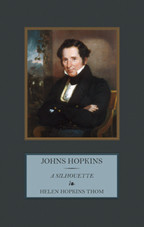Helen Hopkins Thom—granddaughter of Johns Hopkins's older brother Joseph—began collecting material for this portrait when it was possible to talk to people who had actually known the founder of the Johns Hopkins University. Her research became of vital importance when it was discovered that Hopkins himself—owing to a deep sense of humility—had destroyed virtually all of his papers before he died in 1873. First published in 1929, this biography still stands as the authoritative account of Hopkins's life, his business career, and the motives that lay behind his decision to leave his fortune to...
Helen Hopkins Thom—granddaughter of Johns Hopkins's older brother Joseph—began collecting material for this portrait when it was possible to talk to people who had actually known the founder of the Johns Hopkins University. Her research became of vital importance when it was discovered that Hopkins himself—owing to a deep sense of humility—had destroyed virtually all of his papers before he died in 1873. First published in 1929, this biography still stands as the authoritative account of Hopkins's life, his business career, and the motives that lay behind his decision to leave his fortune to establish a university and hospital.
Thom tells the story of Johns Hopkins's family, including the origin of his unusual first name (originally the surname of his great-grandmother). She traces his life from his childhood on the family tobacco plantation to his rise as a merchant and banker who became the largest stockholder of the Baltimore and Ohio Railroad.
Thom portrays a man of principle—an abolitionist and Union supporter in a divided city—who found himself at odds with his Quaker faith. He disagreed with them about temperance, trading in whiskey and enjoying fine wine and champagne. Forbidden to marry the only woman he ever loved—his first cousin Elizabeth—he remained a lifelong bachelor.
Johns Hopkins died of pneumonia at the age of 78 on December 24, 1873. This volume includes his will and instructions to the trustees, in which he articulated his wishes for a school of medicine, a university press, an orphanage, and a school of nursing. Among his stipulations was that the hospital treat anyone, regardless of race, sex, age, or ability to pay.
This reissued edition brings this compelling portrait to a new generation of readers.






